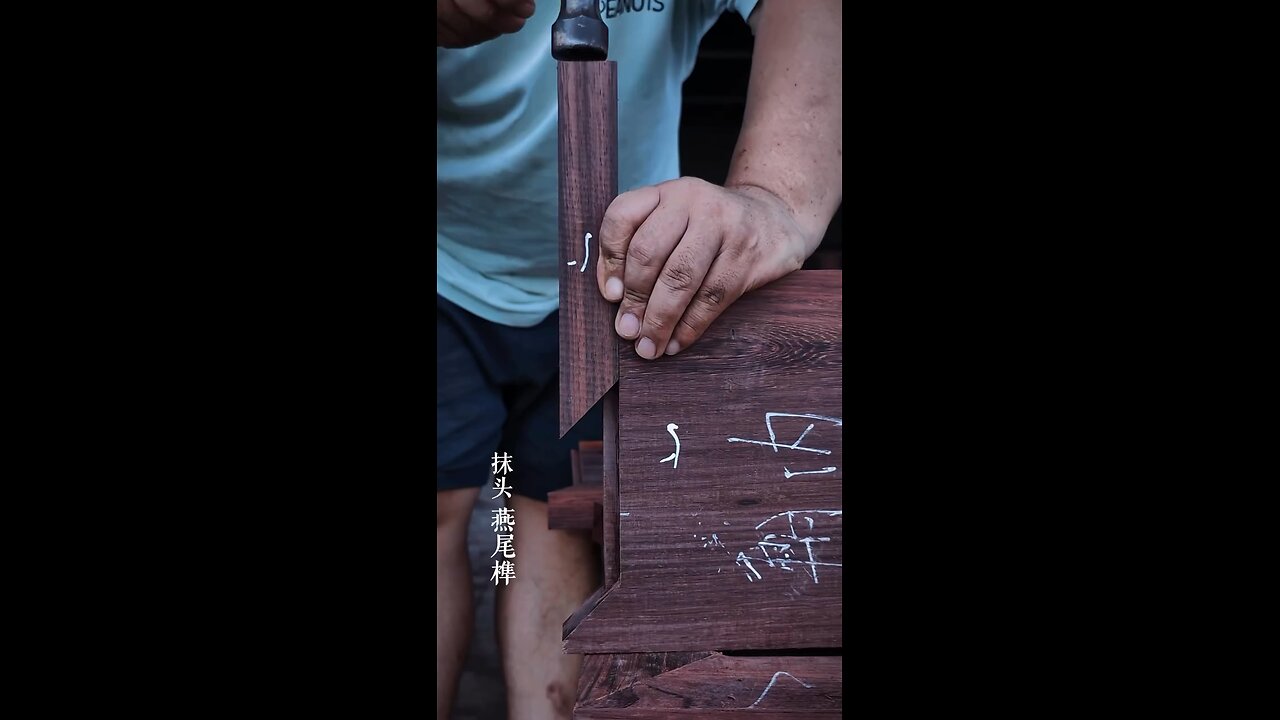Premium Only Content

How Japanese Table Joinery Is Done
In traditional Japanese woodworking, furniture is often joined without screws or nails through a technique called joinery, which involves using precise, interlocking wooden joints. These joints rely on the wood's natural strength, the craftsmanship, and the materials to hold the structure together. Here are some key techniques used:
1. Dovetail Joints (Kiwari-iri)
These are interlocking joints where the ends of two pieces of wood are shaped into wedge-like projections (called tails) and corresponding slots (called pins), creating a strong, durable connection.
Common in drawer construction and small furniture pieces, dovetail joints resist pulling apart, making them ideal for tight-fitting connections.
2. Mortise and Tenon Joints (Ho-iro-no-tsugi)
One of the most fundamental joinery methods. In this technique, one piece of wood (the tenon) fits precisely into a cavity (the mortise) in another piece of wood.
These joints are often used in structural furniture, such as in the framework of tables or chairs.
3. Lapped Joints (Kake-iri)
In lapped joints, two pieces of wood are overlaid and then interlocked, often with a slight bevel on the edges. This allows the pieces to fit snugly together.
Sometimes, the ends of the pieces are shaped to form a stronger bond, increasing the joint's stability.
4. Tusk Tenon Joints (Kakebi)
A variation of the mortise and tenon, where a projecting tenon (with a rectangular or square shape) is inserted into the mortise and held in place by a pin or peg.
5. Japanese Wooden Pegs (Sujigake)
In some cases, after creating a joint, small wooden pegs are driven through both pieces of wood to secure them in place.
These pegs are often used in combination with other joinery techniques, like mortise and tenon, and can be a decorative feature.
6. Kanawa or Sliding Dovetail
This joint involves one piece of wood sliding into a matching channel or groove in the other piece. It's often used for drawer assemblies and certain types of paneling.
7. Shaped Joints
Sometimes, Japanese furniture may feature custom-shaped joints where the edges of the wood are intricately carved to create a strong bond without additional fastening materials.
These joinery methods are designed not only to provide strong, durable furniture but also to highlight the natural beauty of the wood grain and the craftsmanship. Japanese joinery is often seen in traditional furniture such as tatami mats, chests (tansu), and futons. Additionally, many of these techniques don't require glue, as the interlocking nature of the joints holds the pieces together through tension and friction.
The skill of traditional Japanese carpenters has been passed down for centuries, and it is a significant part of Japan's cultural heritage.
-
![Mr & Mrs X - ICE Is A Threat To The [DS] Agenda, The ICE Insurgency Will Fail - EP 12](https://1a-1791.com/video/fww1/b2/s8/1/o/V/N/r/oVNrz.0kob-small-Mr-and-Mrs-X-ICE-Is-A-Threa.jpg) 46:10
46:10
X22 Report
2 hours agoMr & Mrs X - ICE Is A Threat To The [DS] Agenda, The ICE Insurgency Will Fail - EP 12
58.2K19 -
 LIVE
LIVE
Shield_PR_Gaming
2 hours ago10/18/25 | WARNING!!! 18+ Battlefield 6 Dev Dogtags?
29 watching -
 LIVE
LIVE
Lofi Girl
2 years agoSynthwave Radio 🌌 - beats to chill/game to
113 watching -
 LIVE
LIVE
SilverFox
14 hours ago🔴LIVE - ARC RAIDERS SERVER SLAM TEST! DAY 2!
33 watching -
 2:03:11
2:03:11
LFA TV
16 hours agoTHE RUMBLE RUNDOWN LIVE @9AM EST
103K10 -
 LIVE
LIVE
MrR4ger
2 hours agoWERE NOT GAY, WE JUST PLAY ARC RAIDERS W/ TONYGAMING AND AKAGUMO
32 watching -
 LIVE
LIVE
Retro Rewind Pod
12 hours ago📺🌄 SATURCADE ADVENTURES is back! Saturday Morning Cartoon Feels and Gaming Fun
9 watching -
 43:57
43:57
Daniel Davis Deep Dive
3 hours agoDeep Dive Intel Briefing /Lt Col Daniel Davis
3.83K3 -
 LIVE
LIVE
blackfox87
4 hours ago🟢 SUBATHON DAY 16 | Premium Creator | #DisabledVeteran
128 watching -
 1:10:13
1:10:13
Wendy Bell Radio
7 hours agoPet Talk With The Pet Doc
13.4K16